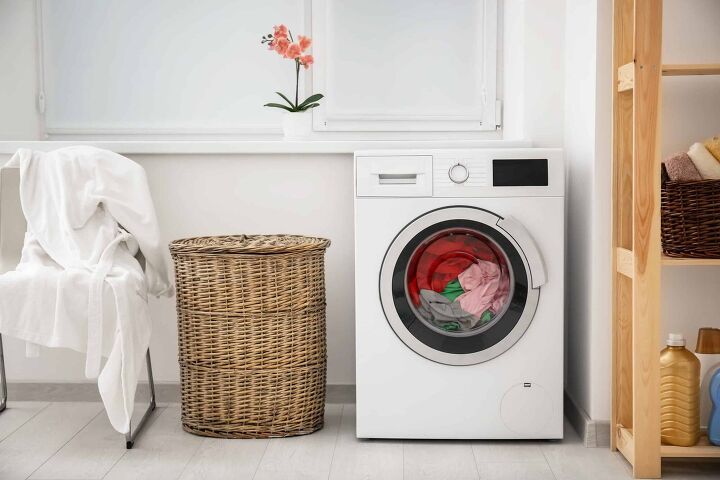How To Bypass A Washing Machine Water Level Sensor

High-efficiency washers are a great choice if you’re looking to conserve water and energy. The water level sensor will determine the amount of water you need based on your load weight. Sometimes, the amount of water is not adequate for an excellent washing of your clothes.
To bypass a washing machine water level sensor you can add weight to your load by soaking your clothes in water. This extra water will trick your machine into thinking there are more items in the tub, bypassing the sensor. You can also try selecting the extra rinse or bulk settings or adjusting your machine’s pressure switch.
While this may seem like it defeats the purpose of water conservation, you will still use less water than a standard washer. In this article, you will learn how to trick your water level sensor into releasing more water. We will explain all of the tips and tricks in-depth, so you can choose which one best suits you.
Do You Need Appliance Repair Services?
Get free, zero-commitment quotes from pro contractors near you.

Understanding the Water Level Switch
The water level switch, or sometimes called the “pressure switch,” on your washing machine functions by sending power from the timer control to the temperature switch and water inlet valve every time the tub requires filling during a wash cycle. As the tub fills up, the switch turns off the flow of water when the level inside corresponds to the load setting used – large, regular, or small load.
Then, the switch signals to the motor to start agitating. The water level switch can be found in various places, depending on your machine’s model and manufacturer. In most cases, you’ll find the switch inside the control console. It is easily recognizable by the rubber tube that connects from the switch to the side of the tub.
As the washing machine fills, water travels through the tube from the base, increasing pressure. Once the pressure reaches a certain point, the switch will shut off the water flow to the washer tub.
A Quick Glance into High Efficiency (HE) Washers
High-efficiency washers cut down on the amount of water they use by up to 80%. They also allow you to save up to 65% of the energy costs to run the washer. However, sometimes the water they allow for washing of individual loads is not adequate.
Some people have complained of:
- Soap scum and residue on their clothing
- Pieces of clothing that felt dry despite after going through the washer
- Smelling as if the clothes are not washed
- Having to put the clothes back in for a second cycle
As you can see, these issues can be extremely frustrating. So, what can you do about it?
Option One: Adding Weight
The HE washers have a sensor in them. The sensor will weigh your load and calculate the amount of water it needs to put out. This, however, doesn’t always work out for the best. Moreover, people find that they receive up to 45% less water than they need to clean their clothes.
One thing you can do is trick your sensor, and there are a few ways to do that.
Adding Thin Towels to Your Load
You can add some thin towels made of more substantial cotton material. This helps save the space for your clothing, but it adds weight to your washer. The water level sensor will then trigger more water into your clothing.
Adding Water on Your Clothing
Water holds a lot of weight. You can set a load of laundry in your washer and dump 2 to 4 cups of water on your clothes. Let the water sit for about 10 to 15 minutes.
The 2 to 4 cups will add about 3 to 4 pounds of weight. This would be enough to trigger your sensor to release more water. The great part about this method is that you don’t need to add more clothing to your load.
A Combination of Both Methods
What you can also do is add wet, thin towels. Get the towels sopping wet in your sink and throw them into a bucket. Then, you dump the bucket of soaked towels into your washer.
Regardless of the method you use to trick your sensor, the outcome is the same. Your washer will release more water so your clothes will come clean.
Option Two: Water Level Options
Of course, this isn’t a trick, but a lot of people forget that they have this option.
Some washers have the option to select an extra rinse cycle. Next to this on your control panel, there is usually a desired water level selector.
You can turn your water level up to the maximum allowed and opt for the extra rinse. Both options combined should produce enough water to clean your laundry.
Option Three: Installing a Water Hose
Are you up for a mini-DIY project? If so, this is for you. It’s super simple, and you can accomplish this in two simple steps.
You will need:
- A splitter
- Plastic hose caps
- A 6-foot hose
Step One
Turn off the hot and cold supply to your washing machine. Connect the splitter to the temperature you prefer to use for washing laundry. For instance, if you use cold, then connect the splitter to your cold-water supply.
Make sure the splitter has a screw in the main channel. You will screw it to your water supply to ensure it is properly fitted.
When you are finished, connect the wash cycle hose to one of the openings through your splitter.
Step Two
Connect your 6-foot hose to the third channel in your splitter.
While your machine is filling with water, open the valve to let the water come in through your hose. When your hose is not in use, be sure to cap it to keep it clean.
The hose is a great way to add extra water without messing with any of the switches inside of your machine. This option is excellent for individuals who are worried about breaking their warranty.
Option Four: Bulk Setting
The best way to utilize the bulk option is by washing smaller loads. If you put too big of a load in, you still may not have an adequate level of water.
Using smaller laundry loads will ensure your clothing gets a thorough wash. A good rule of thumb is to wash no more than 10 to 15 articles of clothing at one time under the bulk setting.
On a side note, remember that jumbo comforters are not suitable for most washers. So, if you’re having issues adequately washing a king-size quilt, your appliance may not be large enough. In that case, your water level sensor is not the issue.
Option Five: Adjusting the Pressure Switch
Adjusting the pressure switch is not an option for everyone. If your drain is lower than the highest water level mark, the water will simply waste into the drain.
To adjust the pressure switch, you will need to open the front control panel on your washer. Some of the pressure switches are behind your appliance.
The switch you want is behind your water level switch, and you will see a screw that is factory sealed on top of it. You will want to use a screwdriver to tighten the screw, which will press the disc inward.
Faulty Water Level Switch
If you have a faulty water level switch, it is likely caused by two problems: a blockage in the pressure hose, or electrical malfunction. Depending on the particular issue, you can either clear the hose out, or test for failure using a multimeter.
Inspecting the Pressure Hose
Before you test for electrical failure, you want to clear out any blockages that may be causing your water level switch to malfunction. To do this, first unplug the machine from the wall and locate the tube connected to the water level switch.
Then, disconnect the tube from the fittings on either end and inspect each side for debris, kinks, or holes. Clean and clear out the tube accordingly and straighten or replace the tube as needed. A good cleaning may be all the switch needs to return it back to being fully operational.
Testing for Electrical Failure
To test the water level switch for electrical failure, you want to use a multimeter set at OHMS x 1. Your water level switch has three terminals. Locate, disconnect, and test them for continuity in pairs. First, place the meter probes on terminals 1 and 2, make note of the reading, and continuing testing the rest in pairs.
The reading should either be infinity (meaning no continuity), or a value close to 0.0 (continuity). A properly functioning water level switch will have two pairs with no continuity, and one with continuity.
Related Questions
My Washing Machine is Filling Up and Won’t Stop, is this a Water Level Sensor Issue?
In short form, the answer is no. Your washing machine filling without stopping is not a water level sensor issue. Usually, this issue stems from your inlet valve.Usually, this just means there is a dirty inlet screen. You can simply remove this and clean it off. Or, you can replace it.
How Do I Fix My Washer if it is Not Draining All the Way?
If your washer is not draining all the way, there may be an issue with your drain hose. The hose sometimes gets clogged or kinked and needs to be adjusted.
Do You Need Appliance Repair Services?
Get free, zero-commitment quotes from pro contractors near you.

Wrapping Up
There’s no need to get into the electrical system of your washing machine. Not only is it unnecessary, but it may break your warranty!
Keep your fix simple. Soak your laundry with water or add a 6-foot hose to your machine for the extra water. Also, don’t forget that there are water level options and additional rinse options as well.
Bypassing your water level sensor is easier than it sounds! Find the option that best suits you.
Related Guides

Heather is a passionate writer who loves anything DIY. Growing up, she learned everything from home repairs to design, and wants to share her tips with you. When she's not writing, she's usually hiking or searching for her next DIY project.
More by Heather Robbins



























